8.8 /10 2 Votes
8.5/10 TV Created by Britt Allcroft | 6.8/10 IMDb Genre Television series | |||||||||||||||||||||||||||||||||
 | ||||||||||||||||||||||||||||||||||
Also known as ''Thomas the Tank Engine & Friends (original title) Based on The Railway Seriesby Rev. W. AwdryChristopher Awdry Written by Britt Allcroft (1984–2001)David Mitton (1984–2002)Various (2002–present)Sharon Miller (2008–12; head writer)Andrew Brenner (2013–present; head writer) Directed by David Mitton (1984–2003)Steve Asquith (2002, 2004–08)Greg Tiernan (2009–12)David Baas (2013–14)David Stoten (2014–present)Rob Silvestri (feature length specials 2013–14)Don Spencer (2014–15)Dianna Basso (2015–present) Theme songs Engine Roll Call, Thomas & Friends Theme Song Cast Michael Angelis, Michael Brandon, Alec Baldwin Narrated by Michael Angelis, George Carlin, Alec Baldwin, Ringo Starr, Mark Moraghan Characters Thomas the Tank Engine, Gordon the Big Engine, Percy, The Fat Controller, James the Red Engine Similar Bob the Builder, Chuggington, Peppa Pig Profiles | ||||||||||||||||||||||||||||||||||
Thomas friends monster in the tunnel toy trains episode train toys for kids play toytrains4u
Thomas & Friends (titled Thomas the Tank Engine & Friends before 2003) is a British children's television series. It had its first broadcast on the ITV network in Great Britain from 1984 to 1992. It is based on The Railway Series of books by the Reverend Wilbert Awdry and his son, Christopher Awdry.
Contents
- Thomas friends monster in the tunnel toy trains episode train toys for kids play toytrains4u
- Thomas friends racers on the rails compilation new bonus scenes thomas friends
- Precursors
- Thomas the Tank Engine Friends and its success
- Thomas Friends and its recent developments
- Cast
- Home video history
- Storytelling
- Models
- Face movements
- Music
- Head writer
- Broadcast
- Reception
- References

These books follow the adventures of a group of anthropomorphised locomotives and road vehicles who live on the fictional Island of Sodor. The books were based on stories Wilbert told to entertain his son, Christopher, during his recovery from measles. Many of the stories from the first four series are based on events from Awdry's personal experience.
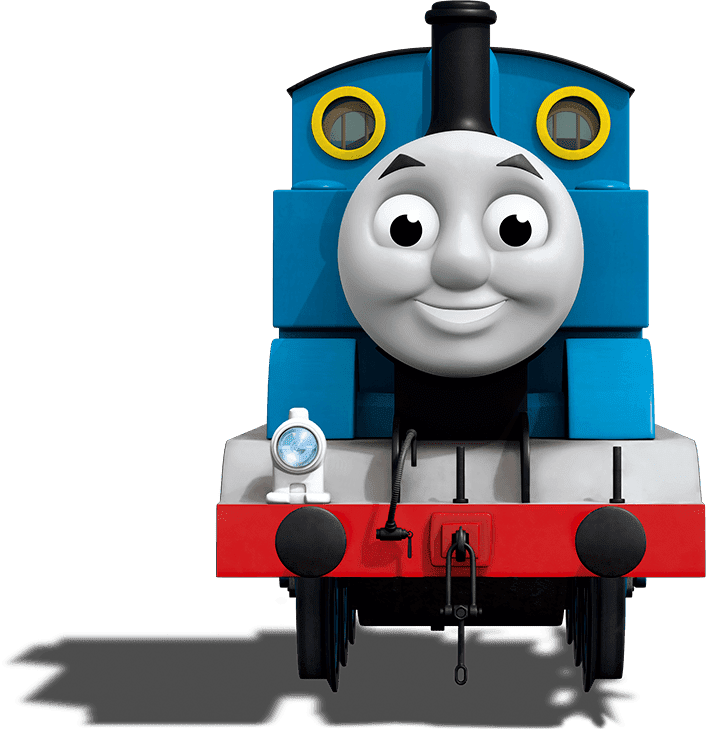
Thomas friends racers on the rails compilation new bonus scenes thomas friends
Precursors
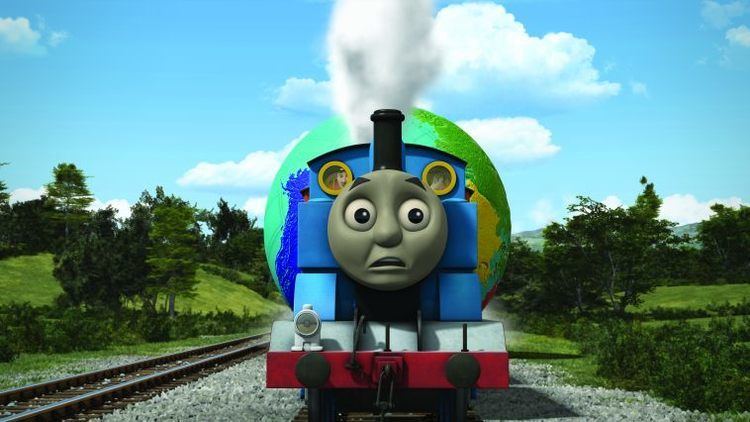
Before the airing of the first episode of Thomas & Friends in 1984, previous attempts had been made to adapt Awdry's stories for television, but not all attempts were successful. The first was in 1953, when the editor of the Railway Series books, Eric Marriott, was approached by the BBC, who wished to use live-action model trains to re-create two stories from Awdry's first book, The Three Railway Engines.
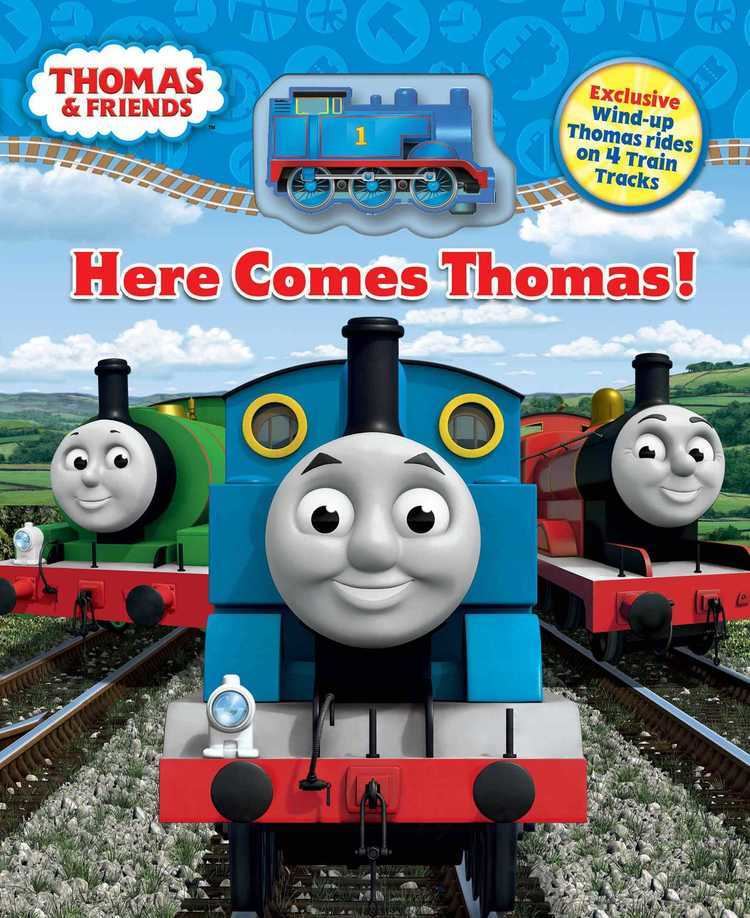
The engines were portrayed by 00 gauge Hornby Dublo models and driven on authentic sets in the style of the original illustrations. The first episode, based on "The Sad Story of Henry", was broadcast live on the evening of Sunday 14 June 1953 from Lime Grove Studios. The live broadcast did not fare well. Reportedly, a failure to switch the points caused the model of Henry to derail and viewers of the live broadcast witnessed a human hand, said to be the one of a crew member, picking him up and placing him back on the rails. Models moved jerkily, and all effects and music had to be superimposed.
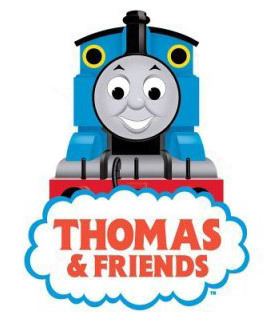
By 23 June, news of the broadcast hit the front pages of the Daily Telegraph and the Daily Mail. Awdry himself branded the episode as "unprofessional", and the point-switching debacle as an "elementary mistake". As a result, the second episode scheduled for 28 June 1953 was put on hold, and then later cancelled. After the "Sad Story of Henry" fiasco, the BBC did attempt to rescue the project by offering to give Awdry and the Railway Series publishers greater creative control over the production of the episodes, but the publishers declined the offer, preferring to focus on publishing new books for the series.
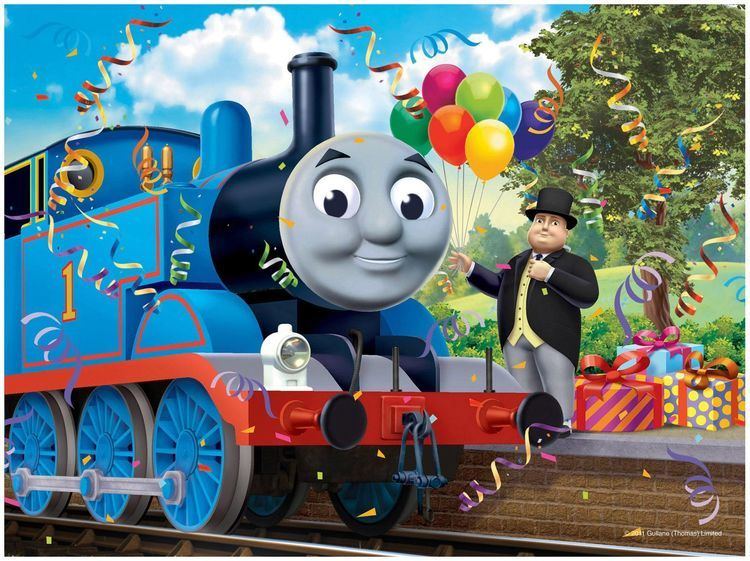
Nearly twenty years later, the BBC incorporated Awdry's stories once again. Fourteen years before Thomas and Friends was aired, Ted Ray, sitting in a stationmaster's office, read out five Railway Series books between 20 September to 2 October 1970 on the popular television story-telling show Jackanory.
Thomas the Tank Engine & Friends and its success
In 1979, British television producer Britt Allcroft was producing a documentary on the Bluebell Railway, a heritage railway in Sussex which actually featured in the Railway Series book Stepney the Bluebell Engine. As part of her research before filming, Allcroft read some books in The Railway Series and was highly entertained and impressed with the stories which Awdry had written, later remarking that "there was something in the stories that I felt I could develop that would connect with children. I saw a strong emotional content that would carry with little children's experiences with life."
Allcroft worked to convince Awdry that she could, with funding, convert the stories into a successful television show. Her efforts were successful, and she purchased the television rights from the publishers of The Railway Series at a cost of what was then £50,000 ($74,000 in U.S. dollars). Allcroft still had to work to raise the money to finance production and, despite showing a keen interest, wanted a level of creative control which she did not want to forego. In the end, after several years of searching and having to place a second mortgage on her home, Allcroft raised sufficient funding from her local bank manager.
By 1981, Allcroft had secured the finances to produce the show, she started to assemble the crew, including producer and director David Mitton, also the founder of Clearwater Features Ltd.; crew member Steve Asquith; American-born producer Robert D. Cardona; and the selected team of composers and songwriters Mike O'Donnell and Junior Campbell.
The series started production in 1984 by Allcroft's production company, The Britt Allcroft Company; Clearwater Features Ltd. (Mitton and Cardona's company); and the ITV company Central Independent Television. The series was originally shot and produced with live action models at the Clearwater in house studio in Battersea, a suburb of London, for Series 1. It later relocated to Shepperton Studios, Middlesex, southwest of London for subsequent series. The use of moving models was seen at the time of the series' conception as an effective method of animating the stories. Locomotives and other vehicles were operated by radio, while humans and animals were static figures. Stop-motion was occasionally employed for instances in which a human or animal character would move. Hand-drawn animation was used in Series 3 to create bees.
The first series (1984) used stories from the first eight books, along with one specially written by the Rev. W. Awdry, Thomas's Christmas Party. The second series (1986) used stories from Book 9 (Edward the Blue Engine) to Book 30 (More About Thomas the Tank Engine). This book was unusual, as it was written specifically by Christopher Awdry to be adapted by the show. At that time, it was a contractual obligation that the series could only adapt stories that appeared in print. The series also used a story from a Thomas Annual, "Thomas and Trevor", and a specially written stand-alone story, Thomas and the Missing Christmas Tree. The second series was actually a 27-episode series, as a single (unaired) episode ("The Missing Coach") was in the process of being filmed, but despite being filmed it was never shown because Allcroft decided it was too confusing for young viewers. The production team went on to use "Thomas, Percy and the Coal" instead.
In between production of the second and third series, the production team were focused in producing two other television series: Tugs, which ran for one series from 1988 to 1989 for Television South (TVS); and the American television series Shining Time Station, which repackaged Thomas & Friends for the American television market from 1989 to 1995.
Just before production of series three, Clearwater closed on 31 December 1990, with The Britt Allcroft Company becoming the sole producer. Series three was broadcast in 1992 for Thames Television. It was made at a cost of £1.3 million (approximately $9.3.million in U.S. dollars). The series was a combination of episodes derived from The Railway Series, stories in the Thomas the Tank Engine and Friends magazine (written by the series' current head writer, Andrew Brenner), and a couple of original stories by Allcroft and Mitton.
One of the primary reasons for diverging from the original books was that many of the stories not yet used featured large numbers of new characters, which would be expensive to produce. Another reason was that the producers wanted more stories about Thomas, the nominal main character. Awdry worried that the new stories would be unrealistic (see Henry the Green Engine for more details). Robert D. Cardona left as producer, while Britt Allcroft joined David Mitton as co-producer. Angus Wright took over as executive producer.
Series four was broadcast in 1995 on Cartoon Network. The producers planned to introduce some new female characters, including motor car Caroline, Nancy, and The Refreshment Lady. Some commentators took this as a response to accusations of sexism levelled against the series two years earlier. In reality, these were not "new" characters, but creations of Awdry from the original Railway Series books. Series four was almost entirely based on The Railway Series. The narrow gauge engines were introduced, and were the focus of a number of episodes. Only one original story ("Rusty to the Rescue", written by Allcroft and Mitton) was used, but this took certain elements of plot and dialogue from Stepney the "Bluebell" Engine.
The fifth series (1998), also broadcast on Cartoon Network, was a radical shift, as all episodes were written by Allcroft and Mitton with no further stories being adapted from the "Railway Series". This series saw the introduction of new characters, such as Cranky, The Horrid Lorries and Old Slow Coach. It also focused on more dramatic and edgy plot-lines, with more severe accidents, than in the earlier seasons. After series 5, Angus Wright stepped down as executive producer.
Thomas and the Magic Railroad was released in July 2000 in the UK, Canada, and the United States. It featured new characters created by Allcroft, along with characters from the show that introduced Thomas to the U.S., Shining Time Station. Despite high production values and the popularity of the show, the film was criticised by British reviewers who were unfamiliar with Shining Time Station. The movie was well received by young children on both sides of the Atlantic, but made only $19.7 million at the box office, against a cost of $19 million to produce. The film was broadcast on BBC1 on 1 January 2004 and again on 29 December 2008.
Thomas & Friends and its recent developments
The Britt Allcroft Company (which changed its name to Gullane Entertainment in 2001) was purchased by HiT Entertainment in September 2002, a company specialising in children's entertainment.
The sixth and seventh series (both broadcast on CITV) continued to introduce action-packed storylines and new characters, and saw the introduction of a writing staff. The sixth series in 2002 was notable for its attempt to create a spin-off based on the successful "Bob the Builder" series. Two episodes introduced a group of construction machine characters known as "The Pack". The spin-off didn't materialise for some time. Eventually, in 2006, thirteen episodes were released straight to DVD as a collection called On Site with Thomas.
The fact that older sets were used and the episodes were shot on 35mm camera (as opposed to the digital camera used at the time of the episodes' release) suggest it was filmed some time before Series 8. In Series 7 (2003) the programme title was officially shortened to Thomas & Friends, this name having been used on merchandise and video covers for three years previously. Phil Fehrle replaced Allcroft and Mitton as producer, though Mitton remained as the director. Executive producer Angus Wright was replaced by Peter Urie and Allcroft as executive producers for Series 6.
In 2003, Allcroft stepped down as executive producer, making Urie the sole executive producer for Gullane Entertainment, and Jocelyn Stevenson was the executive producer for HiT Entertainment.
The eighth series (2004) was the first broadcast on Channel 5's Milkshake! It introduced a number of significant changes to the show. Many of the original founding team involved in the original show since 1984 left the production, notably Britt Allcroft, director and writer David Mitton, and original composers Mike O'Donnell and Junior Campbell. The latter two had been embroiled in a protracted legal dispute with HiT before their departure. Steve Asquith, who was part of the original production team since 1984, took over as director, while Simon Spencer replaced Phil Fehrle as producer.
A new theme song and incidental music were composed by Ed Welch and Robert Hartshorne, respectively. Episode runtime was increased to seven minutes. The series was produced using digital video camera, creating a somewhat different look for the show. Other changes included the additions of CGI educational sequences and transitions between stories. Executive producer Peter Urie also left, while Jocelyn Stevenson remained in her role as executive producer. Sam Barlow became the story executive, while Abi Grant and Paul Larson served as script editors. This series saw the adoption of a centralised cast, including Thomas the Tank Engine, Edward, Henry, Gordon, James, Percy, Toby and Emily.
HiT Entertainment was itself then acquired by Apax Partners, a private equity company, in March 2005.
A straight-to-video film, Calling All Engines!, was released shortly before Series 9 in 2005. While featuring characters from Thomas and the Magic Railroad, it was not a direct sequel. It proved successful, which resulted in more direct-to-video specials being produced.
Series 9 (2005) and 10 (2006) saw the expansion of the supporting cast with new and old characters. From Series 9 the narrator would call out the episodes' names and from Series 11 the theme song was sung starting with the sound of a train whistle. Series 10 aired with twenty-eight episodes rather than the twenty-six of previous years. The eleventh series (2007) was filmed in high definition format. Twenty episodes aired in the original broadcast, while six were released directed to DVD as Engines and Escapades. Jocelyn Stevenson had stepped down as executive producer after Series 10, with Christopher Skala taking her place as executive producer for Series 11. Sharon Miller became the script editor from Series 9 to 11.
Series 12 (2008) saw the introduction of CGI effects (provided by HiT Entertainment's subsidiary Hot Animation), with the intent of producing the show entirely in CGI the following year. The traditional models and sets were still used, but with computer animated faces superimposed on the models to allow for changing facial expressions. Humans and animals were fully computer animated to allow for walking movement. Only twenty episodes were broadcast (the U.S. broadcast featured six additional episodes from Engines and Escapades). Sharon Miller became the head writer, starting with Series 12.
HiT announced multiple changes to the show beginning in 2009. One new aspect was the introduction of live-action host segments to Thomas' home video releases. The host took the form of a character who worked on The Fat Controller's (Sir Topham Hatt's) railway, who would instruct viewers in craft projects. For the final 2 DVDs released for Season 12 in 2009, the host was named Mr. Arkwright (played by Robert Slate). In 2010, beginning with the DVD Splish splash splosh, the host was named Mr. Perkins (played by Ben Forster) and has remained host ever since.
For budgetary reasons, the other major changes were a move to production in CGI, rather than using physical models, and the addition of a voice cast to support the established narrator. The DVD feature, Hero of the Rails, was the first Thomas & Friends production to show these changes, and Series 13 was the first television series in the new format. The CGI animation for the series was provided by Nitrogen Studios of Vancouver.
In September 2010, Apax was preparing to sell off HiT Entertainment and its franchises, including Thomas – regarded as the single most valuable asset – in order to help clear HiT's debts, and in February 2012, sold the company, along with the Thomas properties, to US toy giant Mattel.
During production of Series 16 (2012), Sharon Miller stepped down as head writer, and Andrew Brenner, who had written some Thomas stories in the third series, assumed the role after serving as script editor for "Blue Mountain Mystery". Additionally, Sam Barlow stepped down as story executive after the sixteenth series, and the production of the CGI animation was moved from Nitrogen Studios (of Vancouver) to Arc Productions (of Toronto). King of the Railway and Series 17, both released during 2013, serve as the first special and series developed by the new animation and production team respectively.
2014 saw Tale of the Brave and Series 18, the second special and series animated by Arc, respectively. And in the following year, 2015 saw The Adventure Begins, a special coinciding with the 70th anniversary of the franchise; and Sodor's Legend of the Lost Treasure. Series 19 began airing that same year. 2016 saw some changes. Longtime composers Robert and Peter Hartshorne, father and son team, left the series and Chris Renshaw and Oliver Davis took over. 2016 also saw Thomas & Friends: The Great Race and Series 20 began airing the same year.
Cast
Originally, a narrator was used as the only voice in the series until 2008. Britt Allcroft thought it essential to convey the episode as a story that would be read from a book at home. Individual voice-over actors were given to both the UK and US dubs of the Series, following the switch to Full CGI Animation in 2009.
Home video history
Over the history of the programme, the TV episodes and specials have been released for home viewing in a variety of compilations, formats and languages, by a variety of publishing houses.
Storytelling
Up until Series 12, narration and dialogue were performed by a single storyteller. This was the choice of Allcroft, who wanted the television stories to be an extension of the way they would be told at home in a comforting environment. All character emotions would come from the nuances of the storyteller's voice, in conjunction with facial expressions, music, and actions on-screen.
Models
The original live action models were filmed on an extensive model railway layout built at the studios. The models were built to the 1:32 scale, known in model railway circles as "Gauge 1". The locomotives used chassis made by Märklin with specially made bodies. Along with the moving-eye and eyelid mechanisms and clay faces, these bodies also included smoke generators. Coaches and trucks were made using Tenmille kits. Later models were constructed entirely from scratch. Some of the models from the sister television series Tugs were reused in later episodes of the series.
From Series 4 to 12, some larger-scale models were used for the narrow gauge characters, to more easily fit the complex mechanisms into them while retaining a sufficient level of detail. In Series 6, the characters known as "the Pack" (construction machines) were also constructed on a large scale, and larger models of Thomas and Percy were made to interact with them. In the ninth series, another larger Thomas model was built to the same scale as the narrow gauge engines to provide greater possibilities for interaction. It was joined by a large version of James in the tenth series. In 2009, some of these models were put on display in a special exhibit at Drayton Manor Theme Park's Thomas Land. Nitrogen Studios, who provided the animation for the series from series 12 to 16, also has some of the original models on display.
Face movements
At the show's conception in 1984, live action model animation would not deliver lip sync, but show co-creator Britt Allcroft and model director David Mitton did not see this as an inhibition. About 20 years later however, with advancement in technology, the show saw the introduction of CGI by HIT Entertainment's subsidiary HOT Animation. At first this was used to generate smoke and other effects, but later, HIT (the current owners of Thomas) announced its intent to introduce a fully CGI series in 2009. With Series 12, CGI by Nitrogen Studios was used to animate characters' faces and to make people and animals mobile within the stories. The following series saw a transition to full CGI animation.
Music
Mike O'Donnell and Junior Campbell composed the show's original main title theme, incidental music and songs, which were used for series 1–7 comprising 182 episodes between 1984 and 2003.
In 2004, Robert Hartshorne took O'Donnell and Campbell's place as composer, while Ed Welch became the show's songwriter from Series 8 to The Great Discovery, and Welch left after The Great Discovery. Hartshorne took his place as songwriter from Series 12 and onwards. From Day of the Diesels/2011-2016, Robert's son Peter Hartshorne helped him with the music.
In 2016 the Hartshornes left the series and Chris Renshaw and Oliver Davis took their places.
Head writer
Since series 12, there has been a head writer for the series. Prior to the introduction of a head writer, the script editor performed similar duties. Sharon Miller served as head writer from series 12–16 and stepped down after series 16 and was replaced by Andrew Brenner, who had written many "Thomas" stories for various magazines as well as his own original stories, several of which were later adapted for television episodes for Series 3 and Series 5, for which he had remained uncredited. Brenner had been a writer of several other children's animated series, such as Angelina Ballerina, Tractor Tom, The Cramp Twins, Maisy, Fireman Sam, The Amazing Adrenalini Brothers, The Amazing World of Gumball, Punky, Animal Stories, Fungi, Fetch the Vet, The Likeaballs, The Lampies, Rubbadubbers, The Koala Brothers, Spot, The Brothers Flub, Pet Squad, Poppy Cat, Gaspard and Lisa, The Tidings and Binka, as well as being the creator of Caribou Kitchen, The Vaughan Boys, Curly Hare and Humf and writer for several magazines featuring children's characters such as The Real Ghostbusters, Count Duckula, Muppet Babies, Care Bears, Fireman Sam, Rupert the Bear, ThunderCats, The Trap Door, Scooby-Doo, Tom and Jerry, Popples, Stoppit and Tidyup and Thomas's sister series Tugs and has written scripts and took over as head writer for Thomas for King of the Railway and onwards. Sharon Miller has also been the voice director since the second CGI animated film Misty Island Rescue, and continues to work on the series in this capacity.
Broadcast
In the United Kingdom, Thomas the Tank Engine & Friends was originally broadcast on ITV until 1992, but returned in 2003 as Thomas & Friends and ran until 2006. In the United States, the series premiered on PBS Kids in 2004. The series had first appeared only as sequences on Shining Time Station during the program's run from 1989 to 1995. The sequences of the series later aired in 1996 on Mr. Conductor's Thomas Tales. The series aired on Storytime with Thomas on Freeform (then called Fox Family Channel) from 1999 to 2001. When Thomas & Friends premiered on PBS, it was first distributed from 2004 to 2007 by Connecticut Public Television and by WNET from 2008 onwards. The program airs in Australia on ABC Kids and on FOUR in New Zealand. In Canada it plays on TVO, Family Jr., and Knowledge Kids.
Reception
Common Sense Media rated the show a 4 out of 5 stars stating "Parents need to know that Thomas & Friends is told through the voice of a single narrator and is compelling even for the youngest viewers, without overstimulating young children's sensitive field of perception. It is generally a male-centric series, though a few females do make appearances.".
